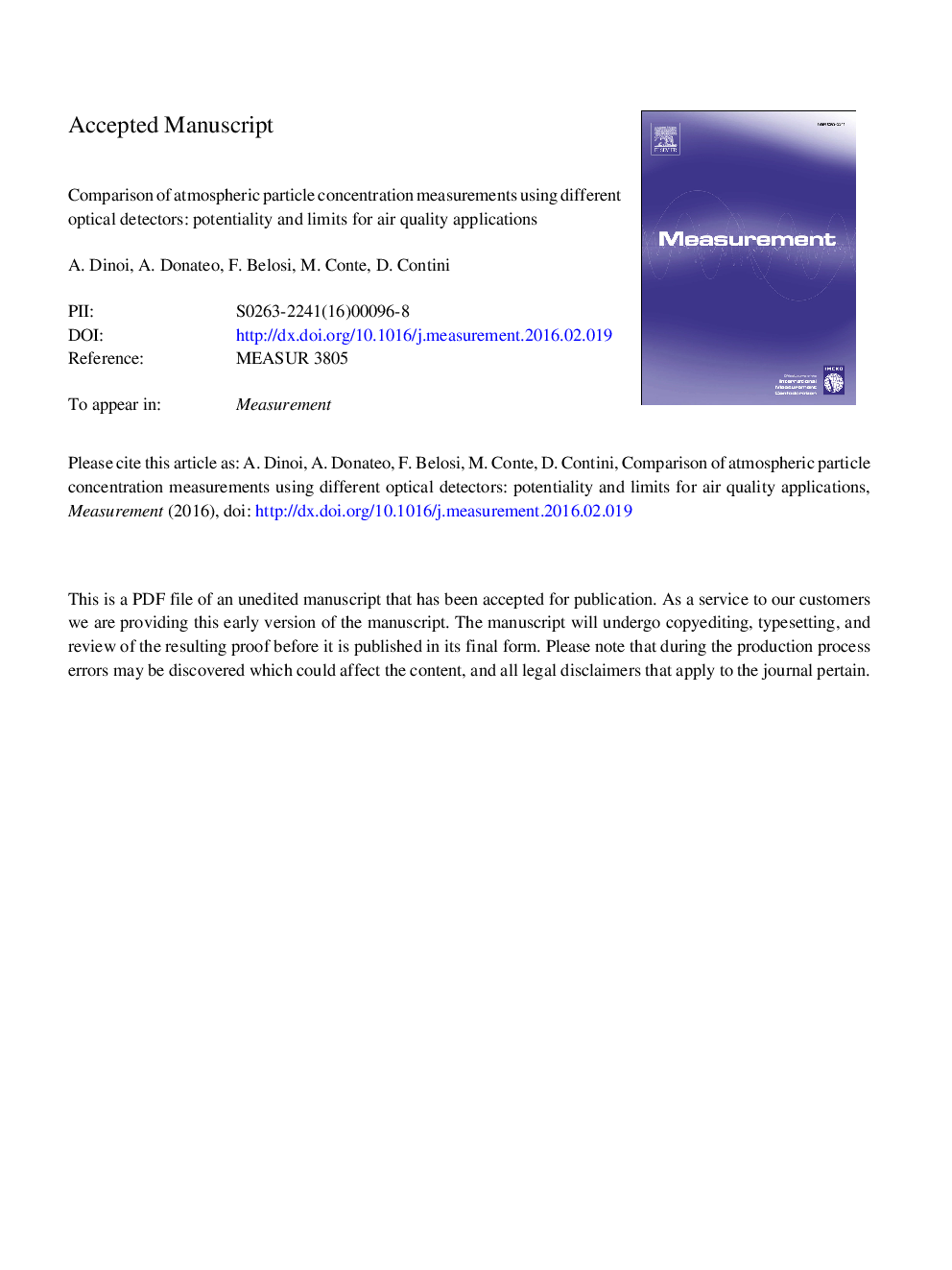| کد مقاله | کد نشریه | سال انتشار | مقاله انگلیسی | نسخه تمام متن |
|---|---|---|---|---|
| 5006618 | 1461481 | 2017 | 27 صفحه PDF | دانلود رایگان |
عنوان انگلیسی مقاله ISI
Comparison of atmospheric particle concentration measurements using different optical detectors: Potentiality and limits for air quality applications
ترجمه فارسی عنوان
مقایسه اندازه گیری غلظت ذرات جرم با استفاده از آشکارسازهای مختلف نوری: پتانسیل و محدودیت های کاربرد کیفیت هوا
دانلود مقاله + سفارش ترجمه
دانلود مقاله ISI انگلیسی
رایگان برای ایرانیان
کلمات کلیدی
موضوعات مرتبط
مهندسی و علوم پایه
سایر رشته های مهندسی
کنترل و سیستم های مهندسی
چکیده انگلیسی
Optical detectors for atmospheric aerosol concentration measurements are often used in air quality applications given their potentialities for online measurements of air quality parameters at high temporal resolution. In this work the performances of different optical aerosol detectors used in air quality applications have been tested and compared for urban background aerosol conditions. Simultaneous measurements of aerosol number concentrations, size distributions and mass concentrations were taken in two different periods: November 2013 - February 2014 and May-June 2014 at an urban background site in Lecce (Southeastern Italy). Measurements were carried out using an OPC Grimm (mod. 1.109), an OPC FAI (Multichannel Monitor) and an optical photometer Mie pDR-1200. Good correlation, with determination coefficients R2 larger than 0.93 were found between particle number concentrations measured by the two OPCs both in accumulation (0.28-0.90 μm for FAI and 0.29-0.90 μm for Grimm) and coarse modes (1.10-10 μm for FAI and 1.15-11.25 μm for Grimm). Absolute counting for the accumulation fraction shows that Grimm OPC detects more particles (about 10%) than FAI OPC at concentration higher than 200,000 particles/L in condition of high RH. This could be due to the changes of the optical properties of particles in high RH conditions visible even if the inlets of the two instruments are conditioned for lowering RH in sampled air. The differences in the absolute counting of the coarse fraction does not seems to be related to RH effects. The performances in evaluating mass concentrations PM10, and PM2.5 were evaluated comparing OPCs and pDR-1200 outputs with reference gravimetric and β-ray methods (that appeared to be essentially equivalent). Good agreement between Grimm OPC and SWAM is found both in PM10 and PM2.5 fractions while FAI OPC revealed greater discrepancy and scatter with respect to reference measurements. The performances of the pDR-1200 photometer were lower with respect to the OPCs with a larger influence of RH and optical properties of particles. The analysis of diurnal average trends in number and mass concentrations as well as the high temporal resolution responses of the instruments showed that optical detectors could be very useful to investigate atmospheric aerosol for air quality applications and to individuate and investigate specific pollution events. However, especially if they are used for evaluating mass concentrations (PM1, PM2.5 or PM10), it is necessary to take into account RH effects (even if the inlet are conditioned) and, possibly, use optical detectors together with reference gravimetric or β-ray methods to check their response in the effective operative conditions.
ناشر
Database: Elsevier - ScienceDirect (ساینس دایرکت)
Journal: Measurement - Volume 106, August 2017, Pages 274-282
Journal: Measurement - Volume 106, August 2017, Pages 274-282
نویسندگان
A. Dinoi, A. Donateo, F. Belosi, M. Conte, D. Contini,
